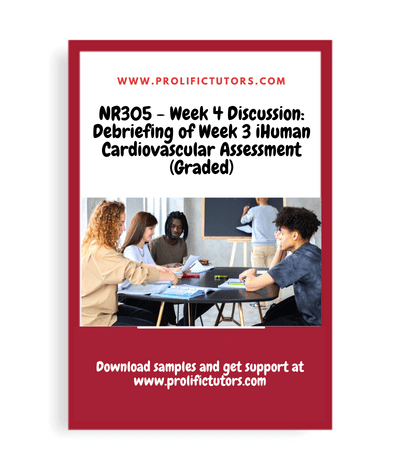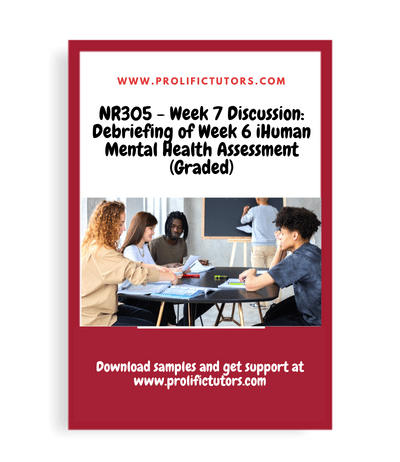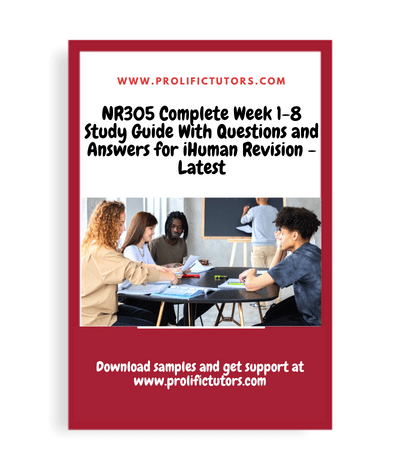Description
Instructions
This assignment is comprised of 2 parts, the first of which is due this week. Part II will be due in Week 7.
In Part I this week, choose a case from your state that involves civil rights or civil liberties that was decided by the United States Supreme Court. If your state does not have a case that was decided by the United States Supreme Court, choose a civil rights case from another state for which the United States Supreme Court issued a decision.
Here is a brief description of civil rights and civil liberties: Civil rights refers to equal social opportunities under the law. It gives you these freedoms such as the right to vote, the right to public education, or a fair trial, among other things, regardless of your wealth or race. Civil liberties mean freedom of religion, equal treatment and due process under the law, and the right to privacy.
You should be able to go online and look up your state and famous cases decided by the Supreme Court. For example, Brown v Board of Education (1951) started in Topeka, Kansas and ended up in the Supreme Court of the United States. Another example would be Calvary Chapel Dayton Valley v Steve Sisolak, Governor of Nevada (2020) that started in Nevada and ended up the United States Supreme Court. A good source of information about cases decided by the United States Supreme Court is www.scotusblog.com. Other sources can be researched online using search terms for “civil rights cases decided by the U.S. Supreme Court.” Be sure to use a case actually decided by the United States Supreme Court, and not a case decided by your state’s supreme court or a different court. A case that is still pending before the United States Supreme Court should not be used. If you are unsure, please contact your Professor BEFORE you pick your case and submit the assignment as this is a significant part of your overall grade.
Research your court case and write an outline of the case that you will be using to prepare a presentation, which will either be a narrated PowerPoint, a Kaltura Video, or some other format as approved by your instructor. If you are unsure, then verify the presentation format with your instructor before starting work on this assignment.
This week’s assignment should include (a) summary of the case; (b) a case outline; and a summary.
A. Summary of the Case
In one or two paragraphs, provide a general overview of the case that serves as a snapshot of what the case is about and how it ended up in your state high court. A summary is using your words to write a brief history of the case. Do not give your opinion or your interpretation but stick to the facts only.
B: Case Outline
Your court case outline should include:
- Title: Name of the case
- Facts of the case: Provide key facts involving the case.
- History of the case: What legal action was taken based on what your state laws say about this case?
- Legal questions: What were the legal issues the court had to decide?
- Decision or holdings: Did the court decide for the plaintiff or the defendant? Explain the reason behind the decision?
- Verdict and opinion (judgement): What were the concurring and dissenting opinions? How many judges decided for the defendant and how many justices decided against the defendant? What was the final verdict from the judge or the jury, if it was a jury trial?
C. Conclusion
What was the resulting impact of the ruling? How did the citizens of your state benefit from it? Was this a good decision?
Required Resources
Read/review the following resources for this activity:
- Textbook: Chapter 11, 12
- Lesson
- Minimum of 2 scholarly sources in addition to the textbook.
Writing Requirements (APA format)
- The length of your outline will vary. Usually an outline is anywhere from 1-3 pages long. Make sure to write full sentences to explain your case. It is a concise list to be used as a reference for you during the presentation.
Using the outline, you will be describing the court case in your presentation and the scenario around the court case. The use of Wikipedia as a primary source of information is to be avoided – it is not a reliable source of information.
Search for an example of a case outline in the Internet. Without going into much detail at this state, each of the items listed above has a subject sentence with 3-6 bullet points that can help you expand on the topic.
For Week 7, you will be creating a narrated PowerPoint, or a video as approved by your instructor, from this week’s outline.
This assignment is worth 200 points.
- 1-inch margins
- Double spaced
- 12-point Times New Roman font
- Title page
- References page (minimum of 2 scholarly sources in addition to textbook if cited)
Grading
This activity will be graded based on the Written Assignment Grading Rubric.
Course Outcomes (CO): 1, 5, 6
Due Date: By 11:59 p.m. MT on Sunday
Rubric
Week 6 – Part I: How the Courts Address or Respect Our Rights as Citizens – Outline
| Week 6 – Part I: How the Courts Address or Respect Our Rights as Citizens – Outline | |||||||
| Criteria | Ratings | Pts | |||||
| This criterion is linked to a Learning Outcome Summary |
|
30 pts | |||||
| This criterion is linked to a Learning Outcome Title and Facts of the Case |
|
30 pts | |||||
| This criterion is linked to a Learning Outcome History of the Case |
|
40 pts | |||||
| This criterion is linked to a Learning Outcome Legal Questions |
|
30 pts | |||||
| This criterion is linked to a Learning Outcome Holdings and Court Conditions |
|
20 pts | |||||
| This criterion is linked to a Learning Outcome Verdict and Opinion |
|
30 pts | |||||
| This criterion is linked to a Learning Outcome Writing: Mechanics and Usage |
|
10 pts | |||||
| This criterion is linked to a Learning Outcome Citations |
|
10 pts | |||||
| Total Points: 200 | |||||||

![[Solved] POLI330N - Week 6 Assignment - Part I - How the Courts Address or Respect Our Rights as Citizens - Outline](https://prolifictutors.com/wp-content/uploads/2023/01/Solved-POLI330N-Week-6-Assignment-Part-I-How-the-Courts-Address-or-Respect-Our-Rights-as-Citizens-Outline.png)

![[Top Answer] MATH225N - Week 2 Assignment - Stem and Leaf plots - MATH225N Statistical Reasoning for the Health Sciences](https://prolifictutors.com/wp-content/uploads/2022/07/Top-Answer-MATH225N-Week-2-Assignment-Stem-and-Leaf-plots-MATH225N-Statistical-Reasoning-for-the-Health-Sciences.jpg)
![[Top Answer] MATH225N - Week 2 Discussion - Graphing and Describing Data in Everyday Life - MATH225N Statistical Reasoning for the Health Sciences](https://prolifictutors.com/wp-content/uploads/2022/07/Top-Answer-MATH225N-Week-2-Discussion-Graphing-and-Describing-Data-in-Everyday-Life-MATH225N-Statistical-Reasoning-for-the-Health-Sciences.jpg)




Reviews
There are no reviews yet.